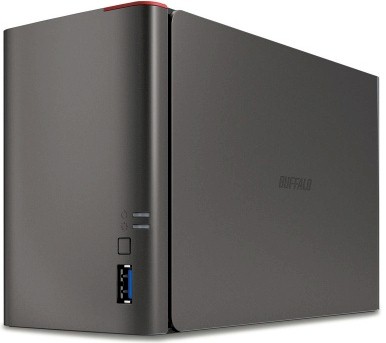
| At a glance | |
|---|---|
| Product | Buffalo Technology LinkStation 421e (LS421DE) [Website] |
| Summary | Diskless dual-drive Marvell Armada-powered home NAS running revamped Buffalo Linux-based OS with USB 3.0 port. |
| Pros | • Cloud integration with Flickr, Eye-Fi and WebAccess Connect • USB 3.0 port |
| Cons | • Still doesn’t support rsync to non-Buffalo products • USB 3.0 port doesn’t deliver 3.0 performance |
Typical Price: $0 Buy From Amazon
Introduction
Updated 10/30/13 – Product retested with newer firmware
I’ve had Buffalo’s diskless version of its LinkStation 420—the LS421e—sitting in the test queue for way too long. Since I finally got a lull in the AC1900 wireless router test frenzy, I dusted it off and ran it through the NAS benchmark suite.
The short story on the LinkStation 421e Diskless Enclosure is that it’s a hardware and software clone of the LS420 with one exception, the addition of a front-mounted USB 3.0 port as noted in the clip from the datasheet below.
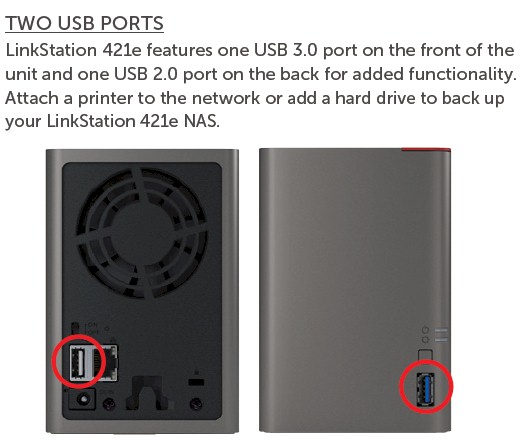
LinkStation 421e USB ports
Scott covered the whys and wherefores of the LS420 just fine back in August, so we’re going to take a brief peek inside and then go right into the performance review.
Inside
I slipped the cover off the 421e (also known by its LS421DE part number) to see what Buffalo chose to light up the USB 3.0 port.
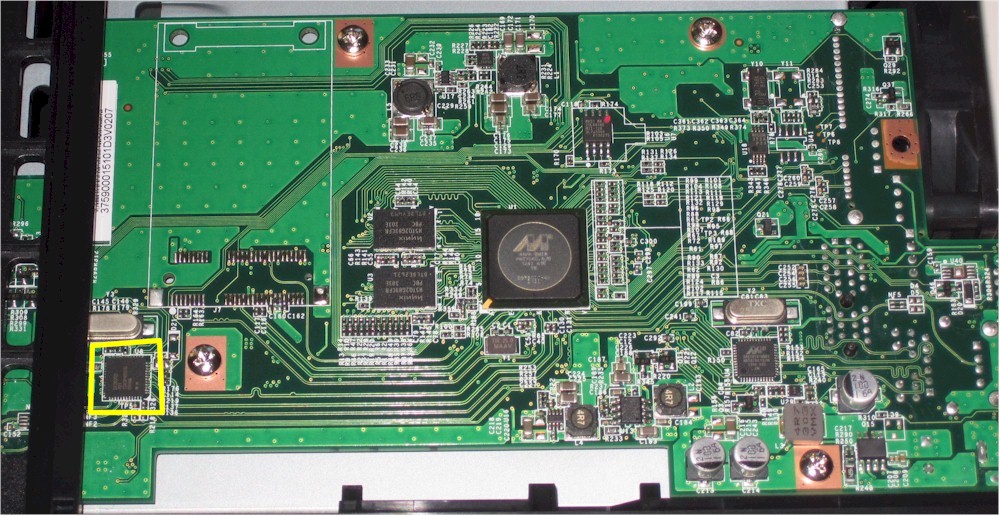
View of the Linkstation 421e board
I found the same exact board with the previously-empty chip position occupied by an D720202 USB 3.0 host controller. Table 2 summarizes the key components of both products.![]()
| Linkstation 421e | Linkstation 420 | |
|---|---|---|
| CPU | Marvell Armada 370 SoC @ 1.2 GHz | Marvell Armada 370 SoC @ 1.2 GHz |
| RAM | 512 MB DDR3 | 512 MB DDR3 |
| Flash | 1 MB | 1 MB |
| Ethernet | Marvell 88E1518-NNB2 Alaska Gigabit Ethernet Transceiver | Marvell 88E1518-NNB2 Alaska Gigabit Ethernet Transceiver |
| SATA | In Armada 370 SoC | In Armada 370 SoC |
| USB 3.0 | D720202 USB 3.0 host controller | N/A |
Table 2: Key component summary and comparison
The supported drive list includes the two WD Red 3TB (WD30EFRX) drives I loaded in for testing as well as plenty of other drives up to 4 TB in capacity.
Power consumption measured 14 W with the two drives spun up. There is no idle drive spin-down. Fan and drive noise were classified as very low, essentially inaudible in my quiet home office.
Performance
Updated 10/30/13 – Product retested with newer firmware
So I once again have learned that I can’t trust these update functions and have to check product support pages directly to ensure that I have the latest stuff. The rest of the review has been heavily edited to reflect the improved RAID0 performance of the new firmware.
1.11-0.68 firmware was loaded to run our standard NAS test process with the two drives configured in RAID0 and RAID1 volumes.
The Benchmark Summary below shows essentially the same Windows File Copy write performance for RAID0 and 1 (53 and 51 MB/s respectively) and about 8 MB/s higher reads for RAID0. (The summary using the 1.01-0.53 firmware is here if you want to compare.)
Setting the NAS Chart filters for two drives and SoC-1 processors put the LS421e in fifth place for Windows Filecopy write and second for read.
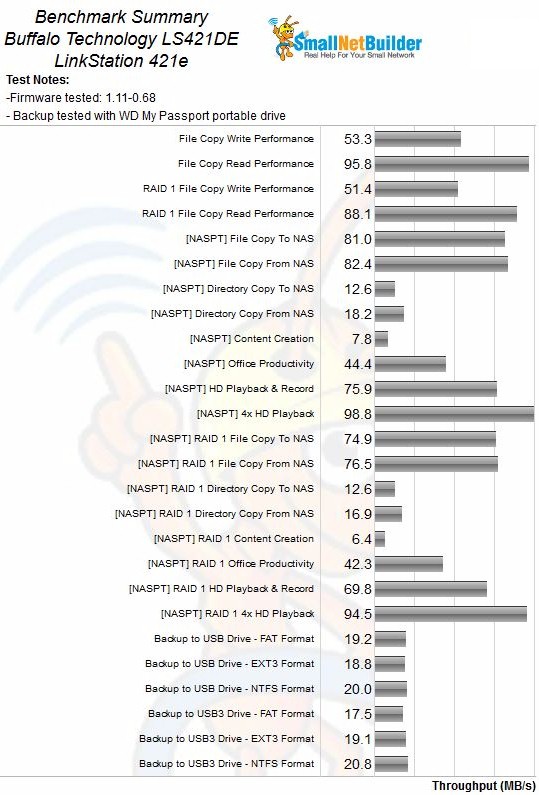
Buffalo LinkStation 421e Benchmark Summary
The NAS Ranker provides a better overall performance comparison, so I’ve put the Ranker Performance summaries for the 421e and 420 side by side below. The #35 ranking for the 421e and #30 ranking for the 420 translate to #12 and #10 rankings when comparing only dual-bay NASes.
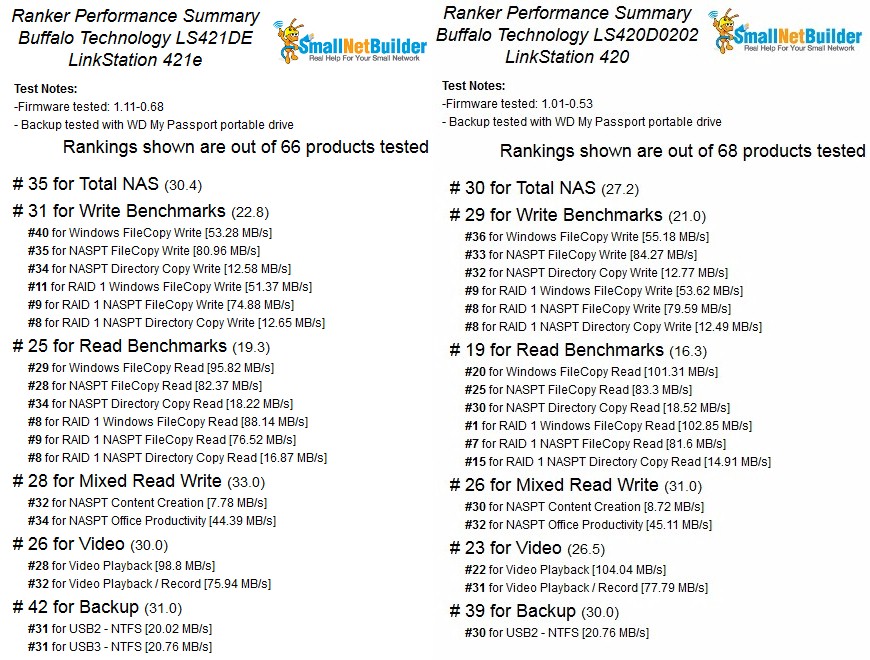
NAS Ranker Performance summary Buffalo LinkStation 421e and 420
Although the 421e is ranked two slots lower than the 420, performance is close enough that you would be hard-pressed to detect a practical difference between the two products. And that’s how it should be since the two are essentially the same product with only an added USB 3.0 port on the 421e.
There is no better proof of design commonality than the LS421e’s backup and RAID1 build time performance. Build time to put the two 3 TB WD Reds into a RAID1 array was well over 24 hours. This is in line with the 9 hours the LS420 took to build a RAID1 volume with its two 1 TB drives. I should have used my stopwatch to clock the rebuild time, since neither NAS has a log to consult.
I also ran into the same problem getting the LS421e to recognize our standard Startech dock USB drive as I had with the LS420. But the WD My Passport drive I used instead has more than enough throughput to not be responsible for the 20 MB/s numbers turned in with both USB 2.0 and 3.0 connections.
Conclusion
It’s nice that Buffalo produced a BYOD version of its entry-level dual-bay NAS for those of us who like to choose our own drives. And it’s thoughtful they threw in a USB 3.0 port to sweeten the deal. So if you’d rather use your own drives and think that Buffalo may eventually improve the performance of the USB 3.0 port, opting for the LS421e might be a better choice over the LS420. But if you have to buy drives, you’ll save money buying them from Buffalo in the form of the diskful LS420.
